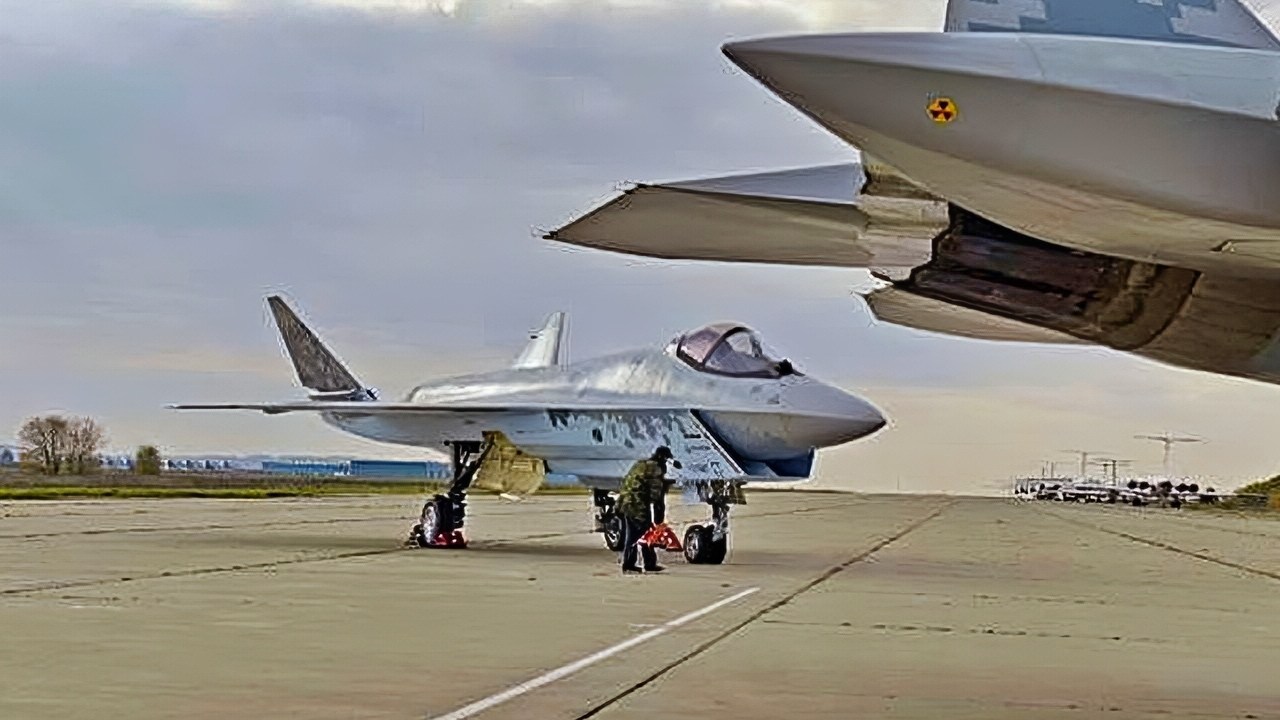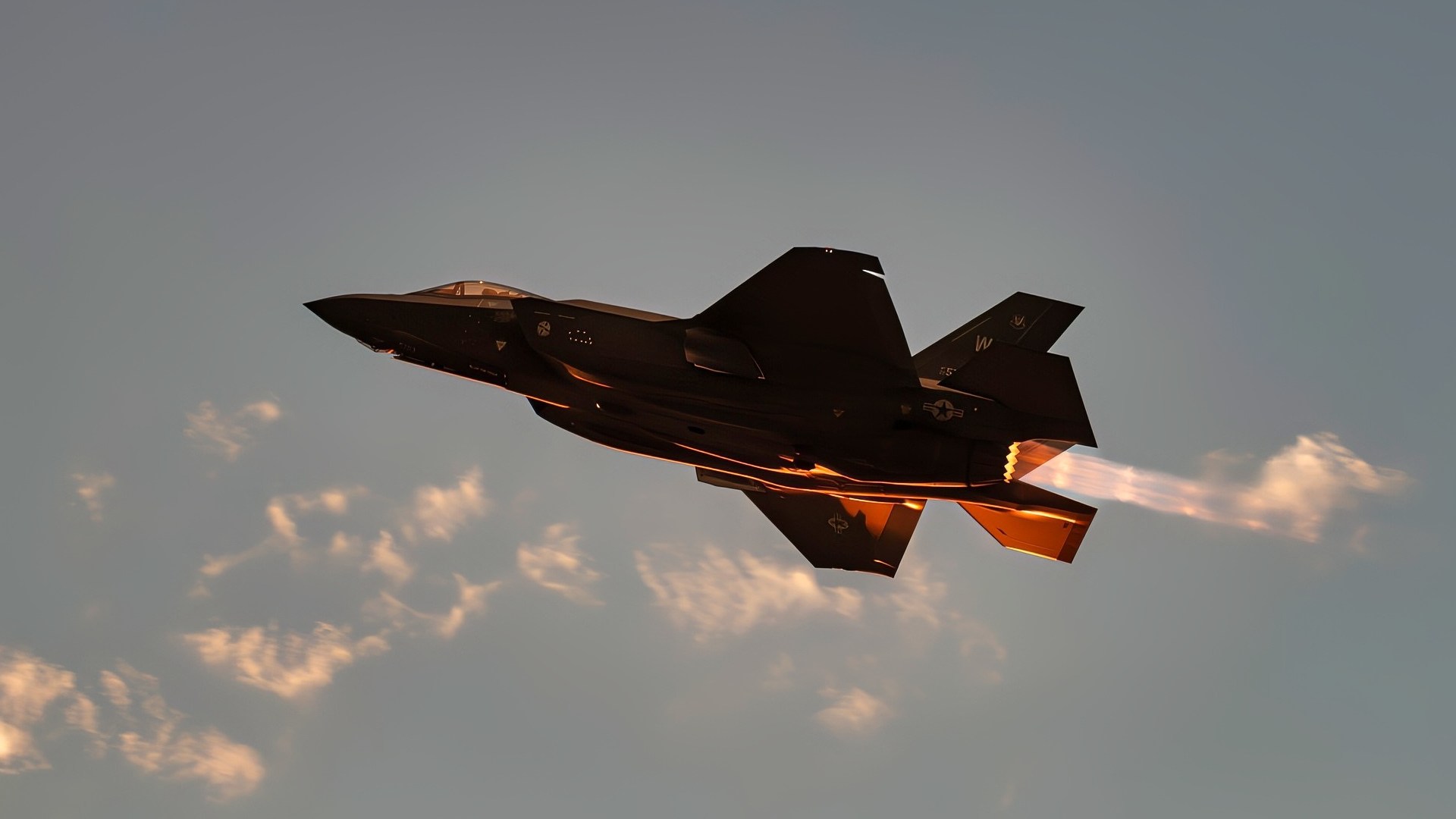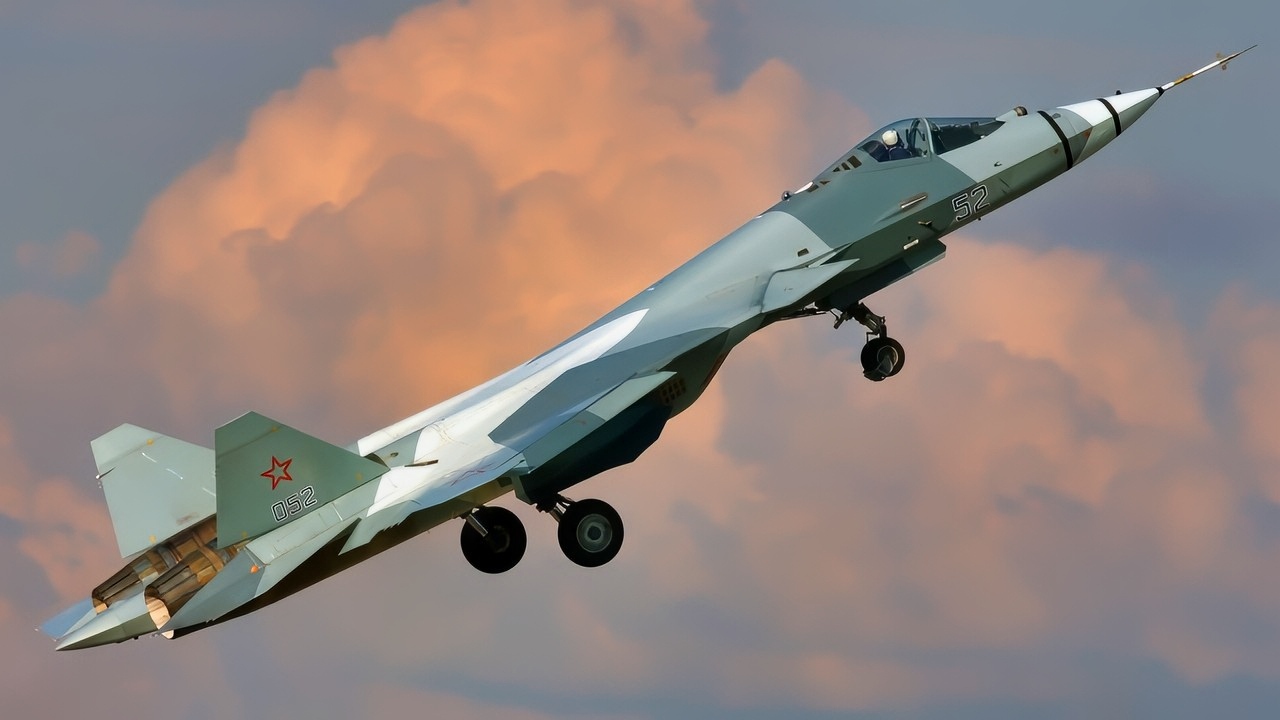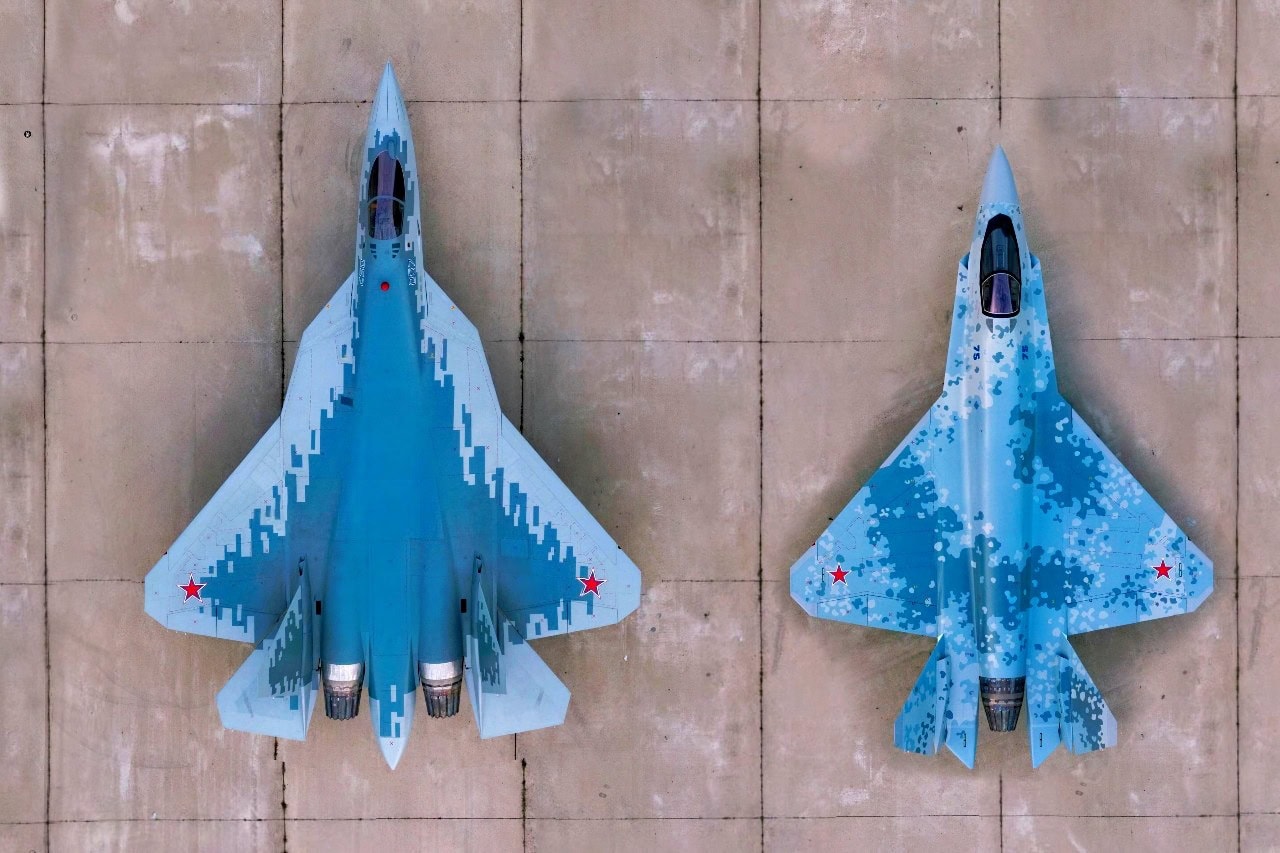Key Points and Summary – Russia’s Su-75 “Checkmate” promises a low-cost, F-35-style stealth fighter—but the decisive pieces remain hidden.
-Renderings show a single-engine, twin-tail jet with internal bays and IRST, yet little is known about its sensors, data-links, EW, weapons, thermal signature, or radar-absorbent build.

Su-75 Checkmate Fighter X Screenshot. Image Credit: X.
-Even if basic performance nears Western 5th-gen levels, Russia’s funding, production capacity, and Su-57 precedent suggest delays and shortfalls.
-Crucially, the Su-75 lacks the multinational networking ecosystem—like the F-35’s MADL—that turns jets into a combat web.
-With the U.S. and partners fielding hundreds of F-35s, quantity plus proven sensing and software could matter more than Checkmate’s sleek silhouette.
Russia’s Su-75 ‘Checkmate’: Stealth Shape, Big Question Marks
There appear to be more questions than answers related to Russia’s emerging 5th-gen Su-75 “Checkmate” stealth fighter, because despite renderings of its external configuration, very little seems to be known about its sensing, computing, fire control, and weapons.
Less visible attributes are likely to prove more defining and impactful than an external stealth structure.
Much like an F-35, the Su-75 Checkmate is a single-engine, blended-wing body with two vertical tails.

A U.S. Air Force F-35A Lightning II takes off for a mission during U.S. Air Force Weapons School Integration (WSINT) at Nellis Air Force Base, Nevada, June 4, 2025. WSINT is a graduate-level training event that combines multi-domain assets in large-force scenarios, enabling U.S. Air Force and joint service members to hone tactical expertise and integrate advanced capabilities in a dynamic threat environment. (U.S. Air Force photo by William R. Lewis)
The fighter’s shape does look stealthy, and many speculate that Russia is trying to engineer a low-cost F-35 competitor for the international market.
It’s unclear how much the new fighter would cost and which Russian allies or customers might purchase it.
It seems conceivable that Russia may seek to build a 5th-generation airpower “counter” to NATO by mass-producing a less expensive F-35-like stealth fighter.
However, such an effort is arguably too ambitious, given how far a pro-Russian Su-75 alliance would need to go to catch up with the hundreds of F-35s now surging across as many as 18 countries.
Furthermore, it seems unlikely that the Su-75 would operate with an F-35-like multi-national datalink.
All F-35s can seamlessly exchange targeting and intelligence data across combat formations using a common Multi-Function Advanced DataLink (MADL). Could allied “chedkmate” Su-75 countries operate with a similar secure command-and-control multinational networking technology?
Also, apart from sensing and information-sharing, the Su-75 is likely to face budgetary and production constraints, as Russia’s Su-57 does.

Su-57 Felon Stealth Fighter in the Sky. Image Credit: Creative Commons.
The Su-75 Checkmate In 1 Word: Questions
External configuration is but one element of stealth technology, meaning it can reduce radar signature by virtue of having few protruding structures or sharp angles, which are more likely to generate a radar return signal.
However, while it can help direct airflow for vectoring and significantly reduce radar cross-section, the external configuration is but one element of a stealth configuration.
Does it have radar-absorbent materials?
How is it bolted and seam in terms of connected, joined elements of the fuselage?
Of equal importance are questions about its thermal signature. The back end is hard to see in the available photos, though the aircraft does indeed have an internally buried engine, likely optimized for low heat emissions.
The Su-75 does have an internal weapons bay, but the quantity and composition of its arsenal, as well as its maximum payload, are unlikely to match those of an F-35.
Available specs for the Su-75 say it has an F-35-like maximum takeoff weight of 26,000 pounds, speeds up to Mach 1.8, and advanced Infrared Search and Track targeting technology.

Su-57 and Su-75. Image Credit: Artist Rendering/Creative Commons.
An operational question here clearly concerns the range, accuracy, and resolution of its sensing, as the aircraft is unlikely to rival the F-35’s sensing capacity.
This plane has shown in wargames to be capable of “seeing” and “destroying” groups of 4th-gen aircraft from ranges where it cannot itself be detected.
The Checkmate does have a different configuration than Russia’s existing Su-57, a stealthy aircraft that Russian developers have purported to be a 5th-generation platform.
Too Few, Too Late?
Should the F-35, Su-57, or any new Russian fighter be similar in performance to any degree, the superior force is the country with more high-end, 5th-generation aircraft.
In this respect, the U.S. has a clear advantage. Globalfirepower.com says the U.S. operates 1,956 fighters/interceptors and is, of course, moving quickly to add large numbers of F-35s.
By contrast, the same assessment reports in its 2021 rankings that Russia has only 789 fighters/interceptors, just more than one-third the U.S. number.
If one of the aircraft were far superior to the other in terms of targeting range, weapons reach, guidance, computing, and EW, numbers might not be as crucial.
However, should they be in any way comparable, the force with larger numbers will be more likely to win a war of attrition, outlast the other, and cover vast areas of combat space that an opponent could not defend.
About the Author: Kris Osborn
Kris Osborn is the President of Warrior Maven – Center for Military Modernization. Osborn previously served at the Pentagon as a highly qualified expert in the Office of the Assistant Secretary of the Army—Acquisition, Logistics & Technology. Osborn has also worked as an anchor and on-air military specialist at national TV networks. He has appeared as a guest military expert on Fox News, MSNBC, The Military Channel, and The History Channel. He also has a Master’s Degree in Comparative Literature from Columbia University.
More Military
Forget the F-35 of F-47: A 7th Generation Fighter Is Possible
$500 Drones are Destroying $10,000,000 NATO Tanks in Ukraine War
The Mach 2.2 F-4 Phantom II Fighter Has a Message for Every Air Force on Earth
China’s White Emperor ‘NGAD’ Stealth Fighter Summed Up in 2 Words










